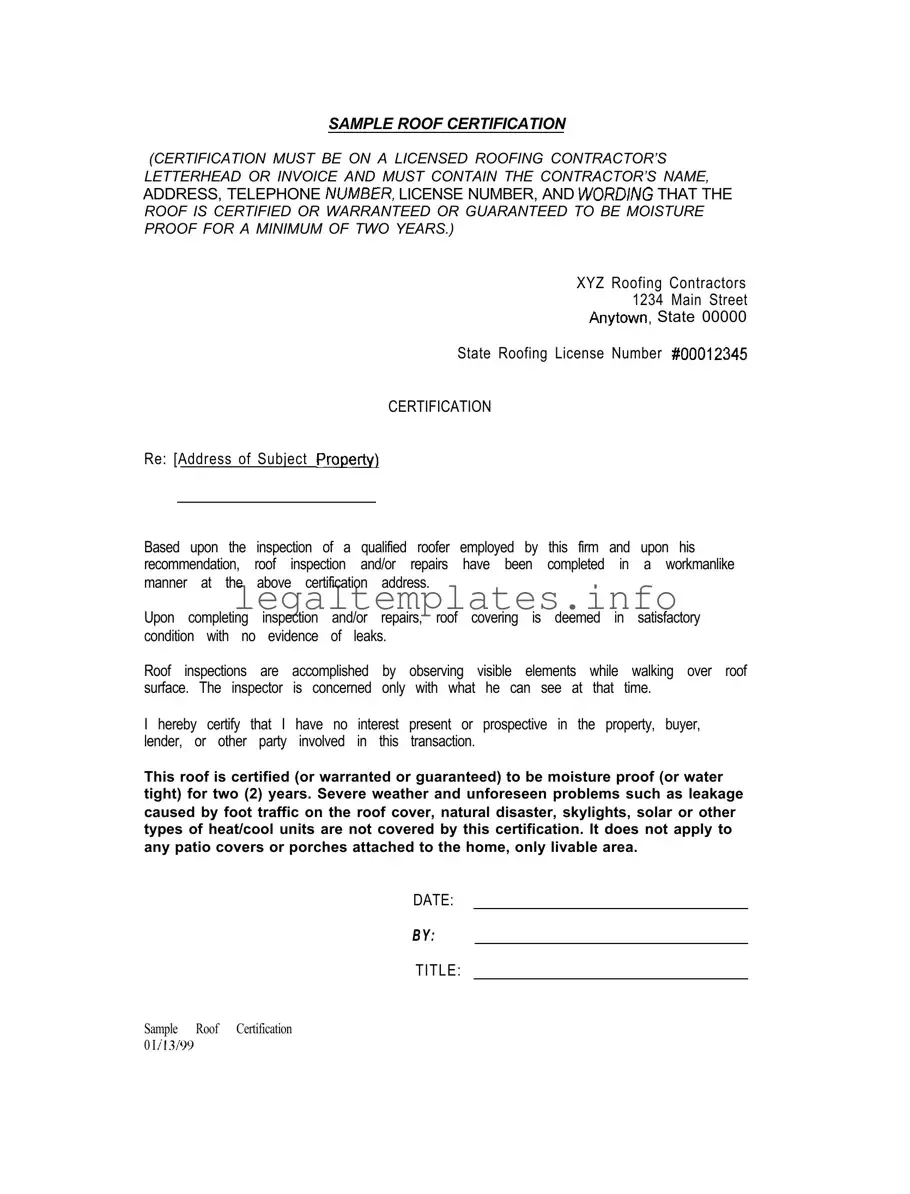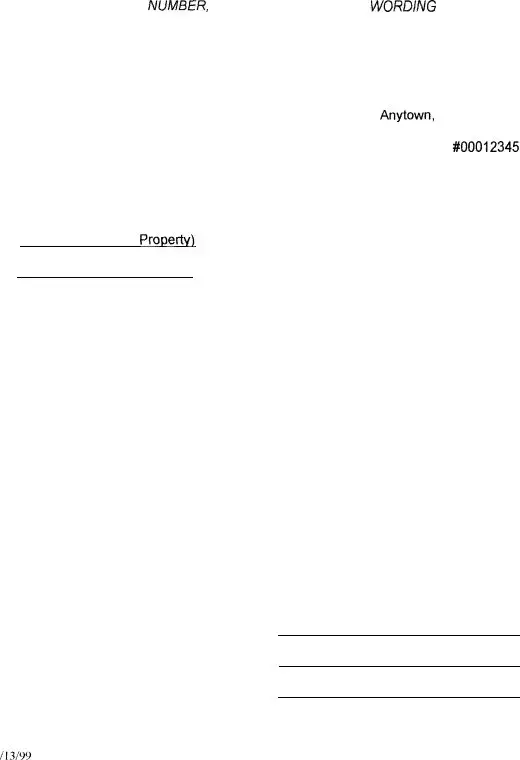What is a Sample Roof Certification form and why is it necessary?
A Sample Roof Certification form is a document provided by a licensed roofing contractor that confirms the roof of a specific property has been inspected and is considered moisture proof for a set period, usually two years. This certification is essential when selling a home or obtaining a mortgage, as it assures potential buyers and lenders that the roof is in good condition and will not require immediate repair.
Who can issue a Roof Certification?
Only a licensed roofing contractor can issue a Roof Certification. The document must include the contractor's name, address, telephone number, license number, and a statement confirming the roof’s certification status. This ensures the certification is credible and issued by a qualified professional.
What information is contained in the Roof Certification?
The Roof Certification typically includes the roofing contractor's details, the address of the subject property, the state roofing license number, a statement from the contractor about the roof's condition, and any limitations to the certification. It also specifies the period for which the roof is certified to be moisture proof, often two years.
How is the roof inspection conducted?
During the roof inspection, a qualified roofer employed by the licensing firm conducts a thorough examination by walking over the roof’s surface and observing visible elements. The inspection focuses on identifying any evidence of leaks or damage to determine the roof’s overall condition.
What does "moisture proof" certification mean?
When a roof is certified as "moisture proof," it means that, according to the inspection conducted by a licensed roofer, the roof is currently free from leaks and is expected to remain so for the duration of the certification period, effectively providing a guarantee against water penetration for that time.
Are there any limitations to the roof certification?
Yes, the roof certification does not cover damages or leaks caused by severe weather, natural disasters, foot traffic on the roof, or issues related to skylights, solar panels, heat/cool units, patio covers, or porches attached to the home. The certification typically only applies to the livable area of the property.
What should I do if I need a Roof Certification?
If you require a Roof Certification, you should contact a licensed roofing contractor to conduct an inspection of your roof. Ensure the contractor is qualified and possesses a valid state roofing license to issue a certification that will be accepted by lenders or buyers.
How long does the certification last?
The duration of the roof certification is typically two years, indicating that the roof should remain moisture proof for at least that period, assuming normal conditions and excluding the limitations stated in the certification document.
Can a Roof Certification be extended?
Extending a Roof Certification beyond its initial two-year validity period is at the discretion of the issuing roofing contractor and may require a new inspection to assess the roof's current condition. If deemed necessary, a new certification can be issued for an additional period.
What happens if there are issues with the roof within the certification period?
If problems with the roof arise within the certification period that are not excluded by the document’s limitations, it is advisable to contact the issuing roofing contractor for a review. Depending on the certification terms and the nature of the issues, repairs may be conducted under the certification's guarantee.

